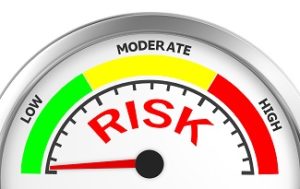Risk assessment is a tool that many safety professionals are familiar with and use on a regular basis. But according to Gary Higbee, EMBA, CSP, the traditional methods for performing risk assessments are incomplete and fail to capture significant hazards.

boygovideo / iStock / Getty Images Plus / Getty Images
Traditionally, risk assessments consist of a two-dimensional matrix. For a given task or operation, a safety professional assigns a rating to both the probability and the potential severity of an injury or incident. The intersection between the two dimensions becomes a risk rating. For example, an operation with a high probability of injury and the potential to cause a fatality or serious injury would be placed in the highest risk category, while a task with a negligible chance of minor injury would be considered low risk.
These ratings can be color-coded, with high-risk operations in red, moderate risk in yellow, and low risk in green. Safety professionals often use this method to prioritize safety efforts and hazard abatement: red items receive top priority, while green items do not require action.
Higbee, President and CEO of Higbee & Associates, Inc. and a senior consultant with SafeStart, contends that this method, while an important starting point, fails to consider the myriad human factors that affect safety. He recommends adding these human factors as a third dimension to gain a fuller picture of the true risk involved in an operation.
SafeStart research has shown that the mental states of rushing, fatigue, complacency, and frustration increase the risk of injury. By attempting to understand when these factors are at play, safety professionals can assign them a rating that can be analyzed along with the traditional probability and severity ratings. With this additional information, said Higbee, operations that looked to be low- or moderate-risk in a traditional risk assessment begin to seem more hazardous and in need of additional safety controls.
Risk is dynamic, noted Higbee. Human factors don’t only add a third static dimension to the risk assessment matrix; they also affect the other two variables. For example, if a worker becomes complacent, the probability that he or she will make an error during a task—and thus the probability of an incident—increases. Likewise, a worker who is rushing to complete a hazardous operation might put himself at risk of a more severe injury than he would otherwise be exposed to.
Higbee conceded that human factors can be difficult to quantify; however, a relative awareness of when a worker might be distracted by personal issues or rushing because of a production delay can help provide a more accurate snapshot of risk and alert employers to the need for additional protective measures. A distracted or fatigued worker might be reassigned to a less hazardous task, or supervisors might be directed to hold preshift meetings with a crew working overtime to emphasize the importance of following safety procedures and working deliberately.
Higbee recommended four “critical error reduction techniques,” or CERTs, to address the risks of human factors:
- Self-trigger on the mental state or amount of hazardous energy so you don’t make a critical error. For example, train workers to recognize the signs of fatigue and take specific steps to mitigate the risk if they notice themselves or a coworker exhibiting them. Or when a task exposes workers to a large amount of hazardous energy, train them to stop and assess their mental state before proceeding.
- Analyze close calls and small errors to prevent agonizing over big ones. A near miss is an opportunity to recognize and understand a risk that previously went unnoticed. Investigate what went wrong and how to prevent or mitigate that risk in the future.
- Look at others for the patterns that increase the risk of injury. Higbee gave the example of noticing a car driving erratically and using that as an opportunity to examine your own driving behaviors. A similar logic can apply in the workplace.
- Work on habits. Train employees to consistently take actions that provide a greater degree of safety and leave less to chance. If safe practices become automatic, mental states have less potential to cause risky behavior.
 Join Gary Higbee for his preconference session, “Human Factors in Risk Assessment,” at Safety Culture 2018, taking place September 12–14 in Atlanta, Georgia! Join Gary Higbee for his preconference session, “Human Factors in Risk Assessment,” at Safety Culture 2018, taking place September 12–14 in Atlanta, Georgia!
|

